David Rodigan turns 60 this year. He’s spent the majority of it utterly in the grip of reggaemylitis.
There’s a lot of video floating around the ‘Net which bears this out, but one of my favorite pieces comes from the London nightclub Fabric. It’s a hand-held crowd shot, not very good except that it depicts our man Rodigan, one of the deans of the international sound system movement, holding court in one of the lairs of the cavernous venue.
httpv://www.youtube.com/watch?v=keMBNkLwLFY
The elder statesman of the turntables is mashing it up, hyping the music with bursts of physical energy, and midway, as Roddy is hopping up and down, a much younger fellow in the audience asks his friend,
“How old is he?”
The guy sounded admiring – and why not? Beneath the surface of this middle-aged man and his gleaming dome and his appearance of a desk clerk beats the throbbing heart of a dancehall lion. Rodigan is justly famed for his work in radio since the 1970s, but it’s his sound system events and clashes which have taken him around the globe to international audiences.
To be sure, he is never just spinning records. Ram Jam Rodigan is a performer of no meager enthusiasm, an extension of his only slightly less amped off-stage persona as a collector of and advocate for Jamaican music. Deft at juggling tunes and inerrant in obtaining quality dubplates, he stays current and conscious in his selections. He is also a strategist skilled in the art of drawing just the right special to nick up the energy level in a dance or to trump a rival selector. His whiteness is never invisible, and occasionally it’s a factor in a clash (most infamously in the 1997 bouts with Ricky Trooper), but whiteness takes a turn away from simple generalizations with this fellow. For at the root of things what we have in David Rodigan is a strange rare bird, a product of accelerating cultural globalization in the last half century, a consummate audiophile, a master entertainer in the dancehall.
Born into a military family in 1951, Rodigan moved about in his youth from continental Europe to North Africa before his family settled in the Oxfordshire village of Kidlington in England. Musically he grew up not only on UK fare but the increasingly popular African American soul and pop. Jamaican sounds seeped into the national consciousness, too, and in the sixties the island’s artists were beginning to cross over to the pop charts. By 15, Rodigan was DJ-ing school dances.
His timing was good. Rodigan came of age at the dawn of reggae, and just as he was maturing, the hits coming out of Jamaica to the UK had moved from candied confections like “My Boy Lollipop” to more substantial message music with the new beat, songs like “Israelites” and “Young Gifted and Black.” He was gobsmacked by dub and became an aficionado of Augustus Pablo and King Tubby and their musical progeny.
In 1978, Rodigan entered the world of reggae radio, co-hosting “Reggae Rockers,” a weekly Sunday program, on BBC Radio London with Tony Williams. The next year, he moved to Capitol Radio for “Roots Rockers,” and it was during this 11-year period that he made and sealed his reputation. He became a reggae teacher on the radio and a reggae pilgrim in Jamaica, meeting many formative artists and producers, from Marley to Tubby. His sojourns to the island led to popular sound clashes with Jamaican radio favorite Barry G in the eighties, a practice he continued in the nineties with sound systems like Bodyguard, Killamanjaro and Stone Love. Since 1990 he has worked for Kiss 100 FM, once a pirate radio station; “Rodigan’s Reggae” airs on Sunday nights.
One mark of his continuing cache is that Fabric, also a record label, commissioned Rodigan to compile a reggae anthology. Fabric Live 54 was released in November 2010 (the number signifying the order in the series). A 21-cut salute to roots and dancehall from the seventies to present, the compilation provided the point of departure in my October 2010 interview with him.
Rodigan is steeped in theater, a background that has served him well in the reggae arena. In the seventies he worked in repertory theater, did work in television (“Doctor Who,” “Shackleton”), and performed a one-man show called “Zima Junction.” The latter was a dramatization of a 1956 narrative poem of the same name by the Russian writer Yevtushenko. In it the poet imagines his hometown giving him permission to explore the world. “I went,” says the poet, “and I am still going.”
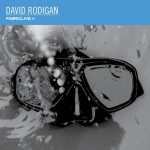 KUELKER: Let’s start by talking about the album that you’ve compiled for Fabric and then head into the theory and practice of sound system DJ-ing. Talk to me about the organizing principles that you applied in putting together this compilation.
KUELKER: Let’s start by talking about the album that you’ve compiled for Fabric and then head into the theory and practice of sound system DJ-ing. Talk to me about the organizing principles that you applied in putting together this compilation.
RODIGAN: Essentially the album is a reflection of the type of reggae and dub music that I think a typical Fabric audience member would enjoy. Allow me to just clarify that. Fabric is a club of paramount importance in the London club scene because it is unique in what it’s created by way of sound system culture, the quality of sound, the organization of the club and the fan base that it has, thousands and thousands of people. They’re very young, and they have a passion for the music that is played in there. A lot of that music, as you know, is either dubstep or drum and bass. But this explosion in dubstep music in the last two years has been captured so to speak by Fabric club, and in playing there, I see the energy that emulates from those audiences.
It just made me think of when I was 16, summer of ’67, the energy of ska and then subsequently how I felt when I first heard King Tubby’s dubs in ’72, ’73. Errol Thompson African Dub, Pick a Dub, all that stuff. King Tubby Dub from the Roots. I was like, you know what? What I want to do is to find songs that I think would excite and stimulate that audience in a way that it first stimulated me.
So the selection elements of dub, obvious ones Roots of Dub. The opening track (“King Tubby Meets Rockers Uptown”) is for me very significant, it’s very difficult to license that track, but we were fortunate in getting permission to include it on the compilation. It opens the album because I’m a fan of Tubby, I’m a fan of Augustus Pablo. Neither of them of course as you know is with us anymore …
KUELKER: It must have been satisfying for you to include Augustus Pablo. I know he came out to play melodica live at least one of your island clashes with Barry G in the eighties. And you met King Tubby in his heyday of doing sound construction.
RODIGAN: They left behind this tremendous legacy. Pablo’s unique sound, a Far East rockers sound, This is Pablo album, then his own productions for Rockers, et cetera were so and still are amazing that I thought this is the perfect way of introducing that music to a young audience, which frankly wasn’t even born when that music was created. There was no Internet – the whole world of communication was so dramatically different then. Yet what they managed to produce in Jamaica was and still is mind-bendingly brilliant. And I think that dub is a perfect reflection of the excitement that Jamaican music generated at its height when the experimentation with dub kicked in in the early ‘70s.
From the opening sequence, which is that particular track from Augustus Pablo and Tubby, into Big Youth deejaying on Waterhouse Rock, Errol T’s version of “Rockfort Rock,” – again reflecting the fact that dubstep have MCs and so do drum and bass DJs have MCs, and Fabric club culture is surrounded by that. I wanted again to point to the origins of this and that it did emulate from people Augustus Manley Buchanan Big Youth, DJ for Tippertone sound system, who deejayed live before he ever cut a record, as did Count Machuki and all the people that you and I know, King Stitt, etc. And so Waterhouse being the region in Kingston where the music emulated from, particularly from Tubby’s studio, then up into a more modern flavor with Alborosie, this young man from Sicily who was reared up in Milan, then nine years ago, jumped on a plane, couldn’t speak a word of English and landed in Jamaica and never came back so to speak. He emulates the vintage rub a dub of the ‘80s in his creations.
So we’re sort of, “King Tubby Meets the Rockers Uptown,” King Tubby from downtown. Augustus Pablo’s brother had a sound system called Rockers, Pablo’s family as you know came from uptown, and so there was this meeting of minds in Pablo’s melodica sound and Far East creations and Tubby’s brilliant recording techniques.
Already we’re into Kingston and the subsidiary of August Town. And Etana [who is from August Town] for me is just one of the most creative and exciting new Jamaican vocalists. I think she has a wonderful voice. Her poetry is exceptional. And that story of course is a true story of the police and what they did at the river bank in August Town. [The song is about a dance that was shot up by police. See http://www.youtube.com/watch?v=omxQgplRxhw.]
And then we’re into “Borderline,” the whole thing of Jamaican society being divided into districts and garrisons and so on, socially, politically and so forth, and Chezidek saying that as a Rastaman he’s not frightened of any borders, that Rasta is a free spirit and can trod wherever he so chooses. Cham’s “Ghetto Story” epitomizes one element of lifestyle in Kingston on the tough side of the tracks.
Some of the other tracks are current, some of the tracks are older. The whole piece, I like to think, would be in an ideal world, an introduction, without sounding patronizing, to a young audience who perhaps would not have picked up this music on their radar because Fabric is not primarily a reggae club.
KUELKER: As I look at the tracklist, I see that you cover a lot of ground with this anthology, geographically and stylistically with these selections. I can’t help but wonder, did you aim for some tracks that for one reason or another couldn’t be compiled?
RODIGAN: There were one or two. Ideally, I would have loved to have had “Jamrock” by Jr. Gong, but we were unable to get that. But we did get tracks that wouldn’t normally be released, I believe, particularly, as I said, the “King Tubby Meets Rockers” track.
Essentially, the album contains songs which we were able to get upon inquiry based partly on my relationship with the artists for 32 years and the producers and the record companies – and also based upon Fabric’s reputation. The reggae fraternity are not familiar or up to speed with Fabric as a label, as a concept, as a club because again, it’s not a world where your average reggae performer would have ventured down into – literally.
Fabric, if you’ve never been there, is an old meat warehouse in Smithfield Market. It cost millions to gut the place. So the original architecture is there, built for cold meat storage, deep down underground.
It is an amazing location, and I say that not because I’ve worked there a couple of times or Fabric invited me to do the CD but simply because it is an amazing space. And the way it’s constructed and the way it’s run, the soundsystems that it has in the different rooms, the whole ambience and feel of the space, the high ceilings, the original architecture and the way it’s been married to modern architecture – it is the template for seriously original club construction in London. That’s why it’s been so successful for 10 years. Before I had even been there, I heard of it and I knew about it, and its image went before it.
So I wanted to portray a collection of songs and instrumentals which reflected what I thought would essentially capture the hearts and minds and souls of that hardcore fan base that are so loyal to that club. And I’d like to think that I’ve done it with this.
One or two people have asked me, were you thinking about putting more dubstep on there? The answer is, yes, I did consider it. But in the same breath, because dubstep is so taken care of by dubstep DJs and dubstep fans, who are completely up to speed with the music that means so much to them, I thought for me to try to begin to reflect that would be slightly patronizing. Clearly, it’s not my music. I don’t have great knowledge of it. I like what I like and I enjoy what I enjoy. Some of it, I can really feel it and understand why it’s so popular because I’ve seen it being played in a live situation and it really does mash up the place.
KUELKER: But some dubstep creeps in …“Stop That Train,” which I see has a very personal connection for you.
RODIGAN: You’ll see in the small print that it says Oliver Rodigan, who is my youngest son. who is seriously into dubstep music. And although I am not in favor of nepotism by any means, the story that reflects what happened is exactly what happened. Two and a half years ago, I went into his bedroom and he was playing “Stop That Train,” the instrumental by Derrick Harriott & the Crystalites. And he had just taken a little loop out of it, a couple of bars out of it, and he had built this rhythm and melody on top of it. I didn’t know he’d done it, I just thought he’d downloaded it from wherever. So I said to him, that’s interesting, I’ve always loved the Stop That Train rhythm. I said, Do you know that rhythm?
He said, ‘Yeah, I’ve heard you play it, Dad.’ Where’d you get the dubstep version? and he started laughing. ‘You’re not going to believe this. I actually made it.’ Oh, don’t be ridiculous. ‘No I did.’ So I was caught because I’d heard something that I thought was really interesting and it was by my son. Typically of Oliver, he didn’t tell me and wouldn’t have done had I not pushed him. I said to him, regardless of the fact that you’ve done this, I want you to burn it and I want to play it.
And I played it in reggae dances and got amazing forwards from it. ‘What’s that different cut of Stop That Train?’ And dubsteps DJs – I don’t do too many dubstep gigs, but I’ve done one or two – they’ve asked me about it. Even in Germany, they asked me about it.
So when it came to choose up the album, I thought regardless of the fact that it’s DJ Cadenza and in the small print ‘O. Rodigan,’ the reason I thought it would be important was because it was a cross-fusion, if you like, a coming together of a classic rock steady rhythm, Lyn Taitt & the Jets, and someone of 18 years of age who heard it and just loved it and decided they would build on top of it, I thought that was very interesting. So it’s on the album!
KUELKER: That’s it – the whole concept of building tracks and versioning which is deep-deep in Jamaican music. Turning now from what’s on the album and why to how the album is presented: Were you tempted at all to make this an ersatz DJ session album – where tracks bleed together and you do some chat pon top? Or to cut a full-on live album?
RODIGAN: Shaun from Fabric said we need to do this live. You need ram the club, turn everything up, and you need to do your Rodigan show live at Fabric with audience mikes and we’ll record the whole thing as a live album. I said, ‘Fantastic. Let’s do it.’ Then just as we were about to announce and do it, we had second thoughts.
And the second thoughts were this: That creating a live dancehall ambience with crowd response and so on and so forth, we are creating a scenario which would be suitable to listen to at certain times. At certain times in the car … heading down to the south coast at four o’clock in the afternoon, it might sound great. One o’clock in the morning, heading down from Manchester, it may not sound so great. It may just be one bag of noise and a whole heapa, you know, ‘who needs that?’
What I decided, and Fabric agreed, is that I should step back from doing a live version and we should allow the music to breathe and speak for itself. Because these songs are all strong songs in my opinion. Every piece on there has something to say, has an ambience and a perspective and a flavor of its own. If it’s crowded by me doing call-and-response with the audience, audience responding to tracks, jack ups, wheel ups, pull ups, etcetera etcetera etcetera, it could crowd the music and possibly swamp the music. And that, Michael, is why I decided ultimately that we shouldn’t do a live version. It should be an album which is mixed in the sense as much as you can mix reggae.
I mean, we could have been real clever blokes and rhythm-timed everything. But then it would have just sounded too clinical. I don’t want to go for, you know, ‘Wow, what amazing mixing. He had it locked on for 40 seconds on the beat!’ Because everyone knows I can’t mix, me more than anyone. I don’t attempt to mix. I come from a school which was one Garrard deck with one changer, clung-clung, on goes the record; then you turn it over and play the flipside. So the idea of mixing – for those that can do it, it’s great and I salute them and I admire them, but I can’t really mix and wouldn’t pretend to claim that I can.
So we decided the album should be put together with a little breathing space where appropriate and where songs tie into each other rhythmically, we could link them;
otherwise we would take them to a natural conclusion and then begin the next song. So that it could be listened to on the train, on the plane, in bed at night with the headphones on with your head on the pillow … without me going, “Puuuuuuulllllll uuuuuuppppp!,” [Rodigan laughs] which you don’t want to hear when you’re chilling. So that’s why we chose the format that we did.
KUELKER: I do agree that it will have a broader appeal this way, but for guys like me, we’d like to see another record come down the pike with all those live elements in it. Or a Best of Rodigan vs. Trooper.
Let me ask a question in a different direction: How extensive have your reggae travels taken you? Where is the further place from home, maybe not even geographically but the furthest culturally, where you’ve taken your performances?
RODIGAN: That’s a very interesting question, and I have never-ever been asked a question like that before. My immediate response would be Japan. I’ve toured Japan twice, and on both occasions I found it most exhilarating. I love the culture of Japan, I love the people and the way they conduct themselves. Their passion for the music is something to behold. They really are crazy about it. They love it with a deep knowledge and understanding which is at times breathtaking. You go in Osaka to Drum & Bass Records and places like that where you see vintage albums … there were one or two I’d never seen in real living color so to speak. So I was fascinated by playing in Japan and by the audience’s passion for the music.
That would be my immediate response to that, but the furthest and strangest places my travels have taken me, I would have to say into the heartland of Jamaica. You can imagine what it must have been like, and it still is a vibrant memory, for a young white man from England, who is not Jamaican, who doesn’t have a cultural connection to Jamaica but has a passion for the music, to end up playing on a soundsystem in Kingston or in the heartland, in May Pen or Walter Fletcher Beach in Montego Bay or down in Belmont, Peter Tosh’s hometown on the south coast, back in the early 80s on a real Jamaican sound system with literally a couple thousand people going bonkers for the music you’re playing – that was something to behold.
That came about primarily as the result of clashing with Barry G [Barrington Gordon], the Jamaican JBC radio broadcaster. We did some live clashes around the island. One of the most memorable ones was in the New Kingston Cinema Drive-in, where I played Gregory Isaacs’ “On the Beach” on the dubplate that, literally, he voiced it that morning or afternoon and we cut the plate that night, with Gussie Clarke almost having to hold the needle in the cutter to get the cut to groove. We played it that night and it got a massive forward.
On more than one occasion it was very strange for me because the announcement would be made, “Now ladies and gentlemen, direct from London, England, the man who’s clashed with Barry G the Boogieman… would you please welcome David Rodigan…” I walk out and there’s you hear this stunning silence, several hundred Jamaicans stared … aghast – they saw this white baldheaded man standing on the stage – because many Jamaicans presumed I was a black Londoner. [he laughs] You could almost see it … “Wha?!” [laughs]
I must say I’ve been given lots and lots of love by Jamaicans at home in Jamaica and abroad. I really have been given tremendous receptions wherever I’ve played within the Jamaican communities, particularly in Jamaica., and I think, primarily, Michael, because of the radio work I did with Barry Gordon.
Radio as you know in Jamaica is the most important medium. It is more important than television, than Internet. Radio is everything in Jamaica, particularly in the 80s. It was a very different world, and people listened to the radio. And those clashes that Barry G and I did – I didn’t realize the significance of them at the time, but if I had a Jamaican dollar for every time someone has said, ‘Bwai, Rodigan, the clash bad’ and ra ra ra, then I wouldn’t have to wonder where my next meal is coming from, so to speak. So many people have said how much they’ve enjoyed those clashes.
It was one particular year the following day [after a Saturday night gig] on the Sunday that Barry G and I drove from Kingston to Negril, and in doing so we passed through various villages and hamlets and so on. And it was like being in a time tunnel! Because each time you went through a little village or hamlet, you could hear cassette tapes from last night’s clash. It was like one long tape delay. It was amazing. That’s when it hit me that Jamaicans love radio and love their music with a passion. And they’d literally been sitting up taping that show the night before and were continuing to play it. And have done so for many years.
Sorry, I’ve gone on too long in answering your question; I apologize. But essentially, Japan, yes. Jamaica, yes. And also of course, it goes without saying, in Europe, particularly in the south of Italy as well as Germany and Switzerland. But the reception for reggae music down in Cilento is really amazing. I do a beach party in a fishing village called Casalabate every August and have done for the past seven years. The average head count for that night is between eight and ten thousand people. Admittedly it’s free, and it’s on the promenade of the beach in that fishing village, but literally thousands and thousands of Italians descend on the beach of Cilento – not just for my show, of course, that would be ridiculous – but for the first two, three weeks of August, because that’s the traditional holiday period in Italy, and that’s where all the reggae fans come to gather together and just go to concerts and festivals and beach parties. That for me the first time I did that was amazing … People who speak an entirely different language and yet have this passion. And there is now, as I’m sure you know, so much Italian reggae in Italian. In dialect. Sud Sound System would be a classic example.
KUELKER: And on the other side of the rock, you’ve been to Sierra Nevada World Music Festival, my favorite fest. They’ve got a crackling Internet message board, by the way, and I wonder what you would like to observe for the Sierra Nevada massive.
RODIGAN: I should say so without any hesitation, and forgive me for not mentioning them earlier, actually. Because my two experiences of Sierra Nevada were most memorable. What I witnessed for the first time and again when I went this year was this Californian flavor of reggae and feel and audience. The first thing that struck me was the crowd control barriers were bales of straw. I mean, come on. I’ve never seen that anywhere else – bales of straw to control the crowds?
It was so chilled and laid back and peaceful and glorious both times I went … The location is absolutely amazing. The Anderson valley, two hours north of San Francisco, rolling hills, beautiful, idyllic. At one stage during my first show, I said something to the effect of, ‘Has anybody got any ganja in here?’ and several spliffs were chucked onto the stage. [He laughs.] I’ve never seen such generosity with ganja before. But then I’d say it is slightly easier to get in northern California than in other territories. [chuckle]
But seriously, on a musical note what I loved about it was the fact that it did cater for what I call real authentic reggae music. It does not pander to anything else other than that. It embraces world music as well of course. But Warren and his team are so devoted to it, I began to feel even on my first visit and certainly on my second visit that I was almost sort of going home.
It’s a feeling of family there, when you arrive, the people, the location… The setting is very informal and therefore very warm and friendly. It is all-embracing. Walking out into the audience and kicking back and relaxing, you know, Wailing Souls on stage, Ken Boothe and Gregory Isaacs. It is a reflection of the quality of music that we as genuine reggae lovers have enjoyed so much over the last 40, 50 years. And that is what’s so important about the festival, that it just brings that home to us. And then to play there in the dancehall tent was so fantastic. The audience were so receptive to what I was playing, the different formats and styles, from ska, rock steady and so on, and had such loving things to say to me afterwards and before. I really did enjoy myself at Sierra Nevada World Music Festival. I hope it continues for as long as they can possibly make it continue.
Selected Ram Jam Rodigan Links
http://www.rodigan.com/
Rodigan’s home site
httpv://www.youtube.com/watch?v=qNtLx0KLpDA
Rodigan at Sierra Nevada World Music Festival 2008 running a set of oldies
httpv://www.youtube.com/watch?v=9Gohg-rxnkM&feature=related
Footage from the 1997 clash between Rodigan and Killamanjaro’s Ricky Trooper with a rather strange “cricket match” narration – rematch footage in December 1997 can be seen at http://www.youtube.com/watch?v=jK7pdQRlvgA&feature=related. They clashed again in 2001 and 2006.
httpv://www.youtube.com/watch?v=eEZhuirE_AM&feature=related
Damian Marley lyricizes “Rodigan is the Standard” over the Rockfort Rock riddim
http://www.youtube.com/watch?v=-frQkjaQNYE&feature=related
a 14-minute Rodigan dubplate mix
httpv://www.youtube.com/watch?v=6OT_IGRsULc&feature=related
Rodigan’s radio interview with Bob Marley in 1980
httpv://www.youtube.com/watch?v=VLddowuWRRc&feature=related
Rodigan’s interview with Dennis Brown
httpv://www.youtube.com/watch?v=XiIAVAnLGZo
Casalabate Music Festival 2010 promo featuring David Rodigan

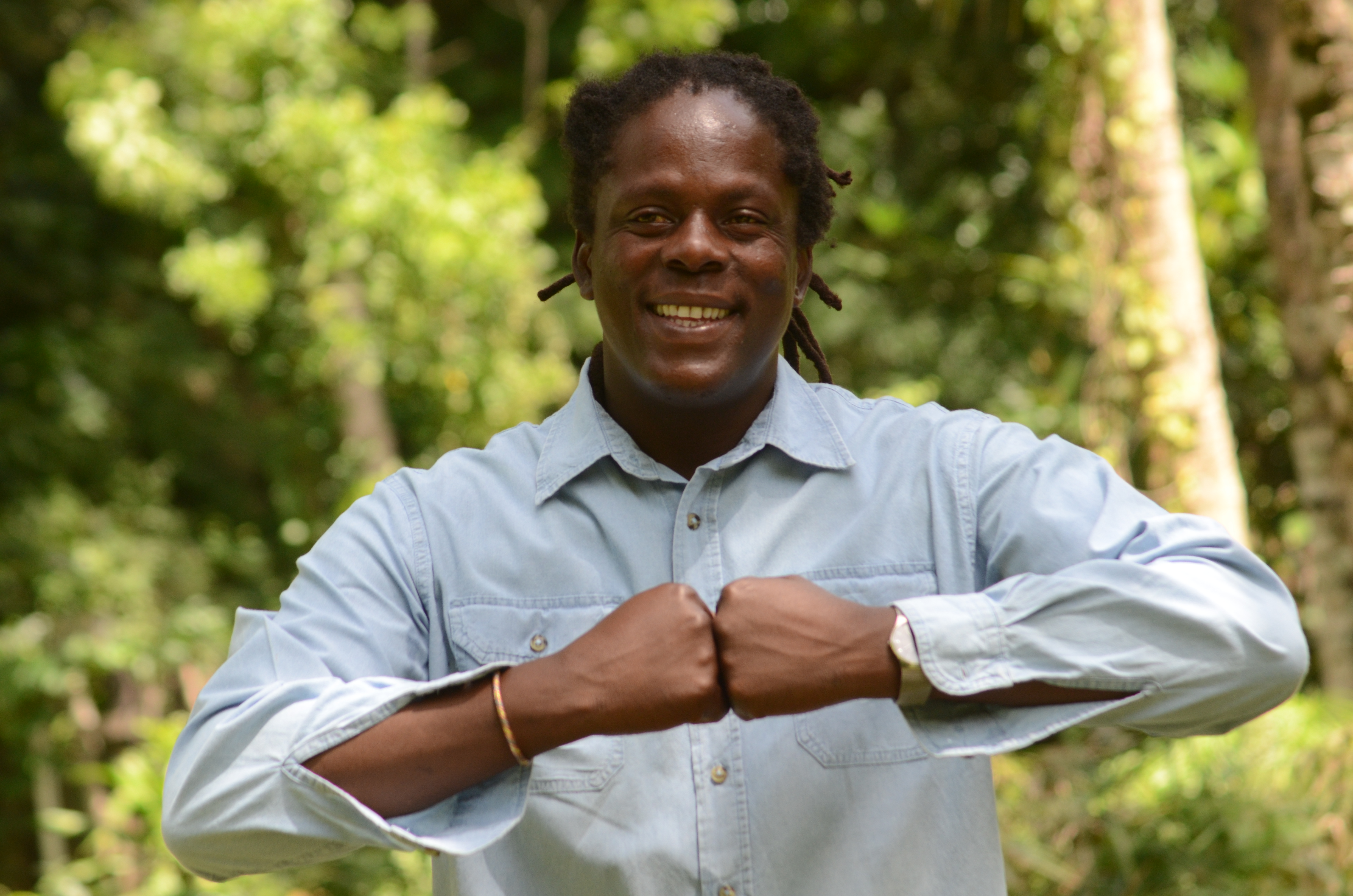
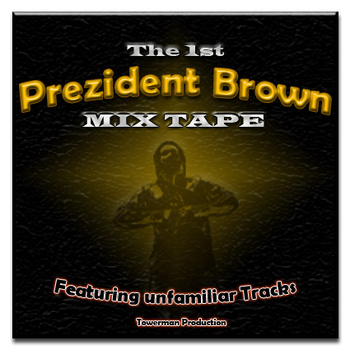
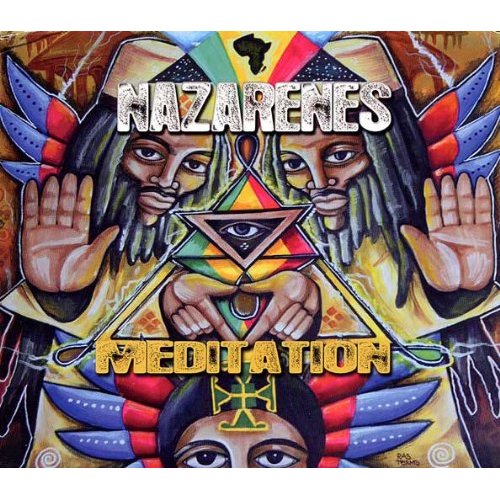
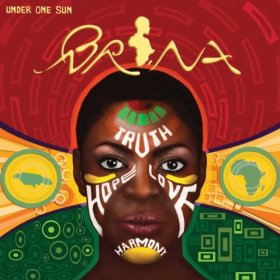
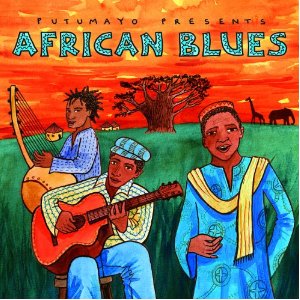

3 comments
Laura Gardner says:
Apr 10, 2011
Great Piece, Michael! Super comprehensive interview with this reggae icon.
Robert Lee says:
Apr 21, 2011
Yep, Damian Marley lyricizes “Rodigan is the Standard” but actually he is quite unique it is important to remember that he is also an actor, he has brought an amazing voice to reggae. I have always been amazed that his clarity has not been better exploited more outside of the genre. He is a consummate and discerning reggae lover and historian. He can be as single minded as he is knowledgeable, I remember in 1983 when I was trying to convince Capital Radio to partner with us in staging Reggae Sunsplash in London. It was his impressive support for the brand which seemed to sway Tony Hale, Nigel Warmsley, John Burrows et al.
lele says:
May 24, 2011
MISTAKE IN THE ARTICLE
THE NAME OF THE LOCATION IN SOUTH ITALY IS “SALENTO” NOT CILENTO
SALENTO IS BETTA KNOW AS JAMAICA OF ITALY